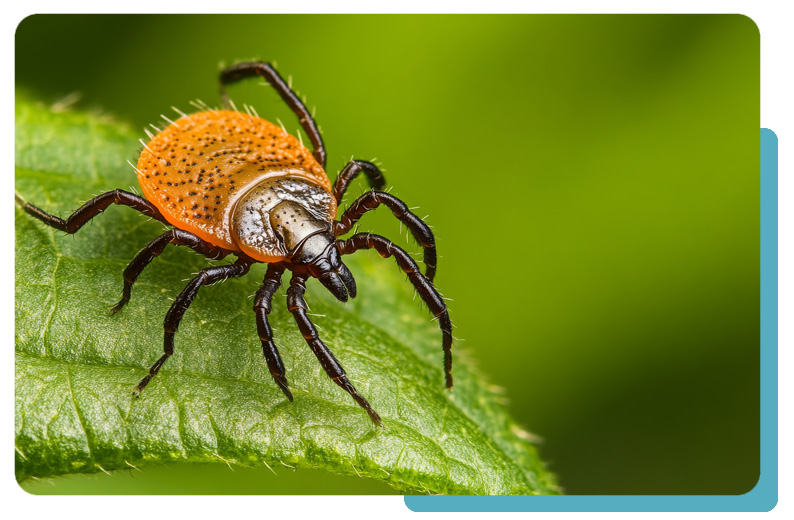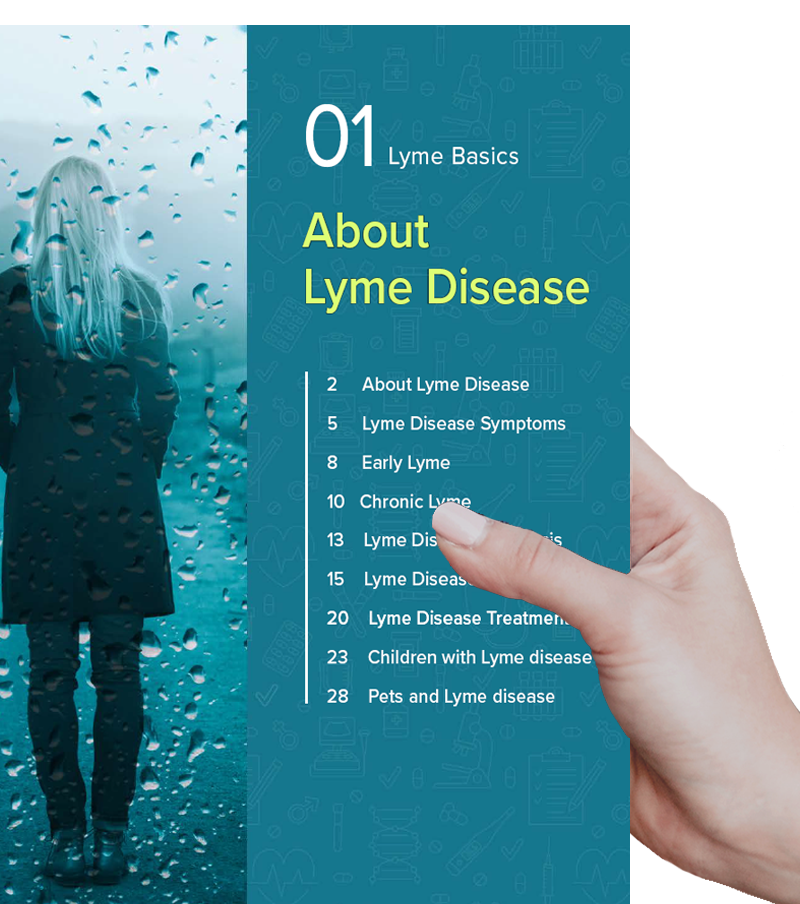Alpha-gal Symptoms
The red meat allergy caused by tick bites can trigger alpha-gal symptoms such as hives, stomach pain, or even severe allergic reactions after eating red meat.

What Is Anaplasmosis?
Anaplasmosis is an infectious disease caused by the bacterium Anaplasma phagocytophilum, which infects white blood cells. Anaplasmosis symptoms can be subtle or severe and often resemble those seen with Lyme disease. And, like Borrelia burgdorferi (the bacterium that causes Lyme disease),
Anaplasma is transmitted through the bite of an infected blacklegged tick (Ixodes scapularis in the eastern and midwestern U.S., and Ixodes pacificus on the West Coast.)
Since Anaplasma infects white blood cells, it can survive in donated blood and may be unknowingly transmitted through blood transfusions or organ transplants, though this is rare.
Since ticks can carry multiple pathogens, a single bite can transmit not only Lyme disease but other infectious agents, like Anaplasma, Babesia or Bartonella. According to the CDC, between 5 – 10% of patients with Lyme may also be co-infected with Anaplasma. In some high-risk regions such as Wisconsin, studies have found that up to 20% of Lyme disease patients also test positive for anaplasmosis.
A study by LymeDisease.org found that over 50% of people with chronic Lyme disease have at least one co-infection, with about 30% reporting two or more.

Among these, anaplasmosis ranks as one of the two most common Lyme co-infections — alongside babesiosis — especially in regions where blacklegged ticks are widespread.
Because co-infections can intensify the severity of illness, early recognition and treatment for both Lyme disease and anaplasmosis are essential. Addressing anaplasmosis symptoms and providing prompt treatment with the appropriate antibiotics, typically doxycycline, can improve outcomes and prevent serious complications.
Anaplasmosis is on the rise in the US

How Anaplasmosis Is Diagnosed and Treated
Anaplasmosis symptoms overlap with many other illnesses, making the disease challenging to diagnose. But early recognition is crucial. Without timely treatment, anaplasmosis can progress and lead to more serious complications, including respiratory failure, bleeding problems, organ failure, or even death.
While anyone can get anaplasmosis, children under the age of 5, people aged 65 and older and those with weakened immune systems are at higher risk for severe illness.
A diagnosis is based on your symptoms and medical history, including exposure to ticks. Laboratory testing can confirm the diagnosis and may include PCR testing to detect DNA of the bacteria or antibody tests. Blood counts often show low white blood cells, low platelets, and abnormal liver function tests.
Patients treated early usually recover quickly with antibiotics. More severe cases may require hospitalization or even intensive care.
Since ticks can carry multiple pathogens, a single bite can transmit not only Lyme disease but other infectious agents, like Anaplasma, Babesia or Bartonella. According to the CDC, between 5 – 10% of patients with Lyme may also be co-infected with Anaplasma. In some high-risk regions such as Wisconsin, studies have found that up to 20% of Lyme disease patients also test positive for anaplasmosis.
Patients may develop:
-
Fever
-
Promote Healthy Eating
-
Encourage Physical Activity
-
Encourage Physical Activity
-
Encourage Physical Activity

Among these, anaplasmosis ranks as one of the two most common Lyme co-infections — alongside babesiosis — especially in regions where blacklegged ticks are widespread.
Could your symptoms be due to a tick-borne disease infection?

How Anaplasmosis Is Diagnosed and Treated
Anaplasmosis symptoms overlap with many other illnesses, making the disease challenging to diagnose. But early recognition is crucial. Without timely treatment, anaplasmosis can progress and lead to more serious complications, including respiratory failure, bleeding problems, organ failure, or even death.
While anyone can get anaplasmosis, children under the age of 5, people aged 65 and older and those with weakened immune systems are at higher risk for severe illness.
Note: The information presented on this page has been reviewed and approved by a member of our Medical Leadership Board.
Take the first step towards understanding tick-borne disease with an exclusive guide to something here, all backed by world-leading science.

More Lyme Basics
Learn More
Ticks are tiny parasites that feed on the blood of their hosts (humans and animals) in order to survive and advance to the next life cycle stage. Most ticks have four stages: egg, larva, nymph and adult. The larva and nymph need a blood meal to move to the next stage. Ticks are extremely small, with the nymph the size of a pinhead.
Learn More
Learn More



